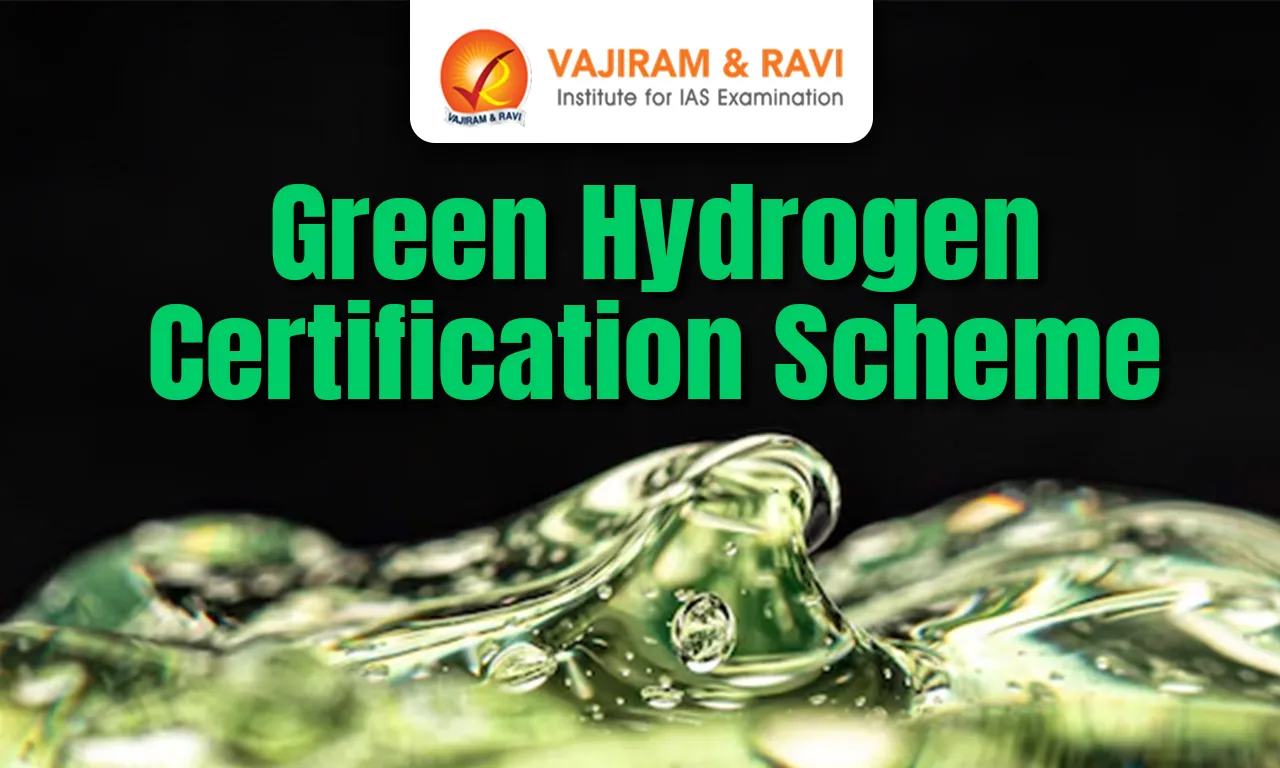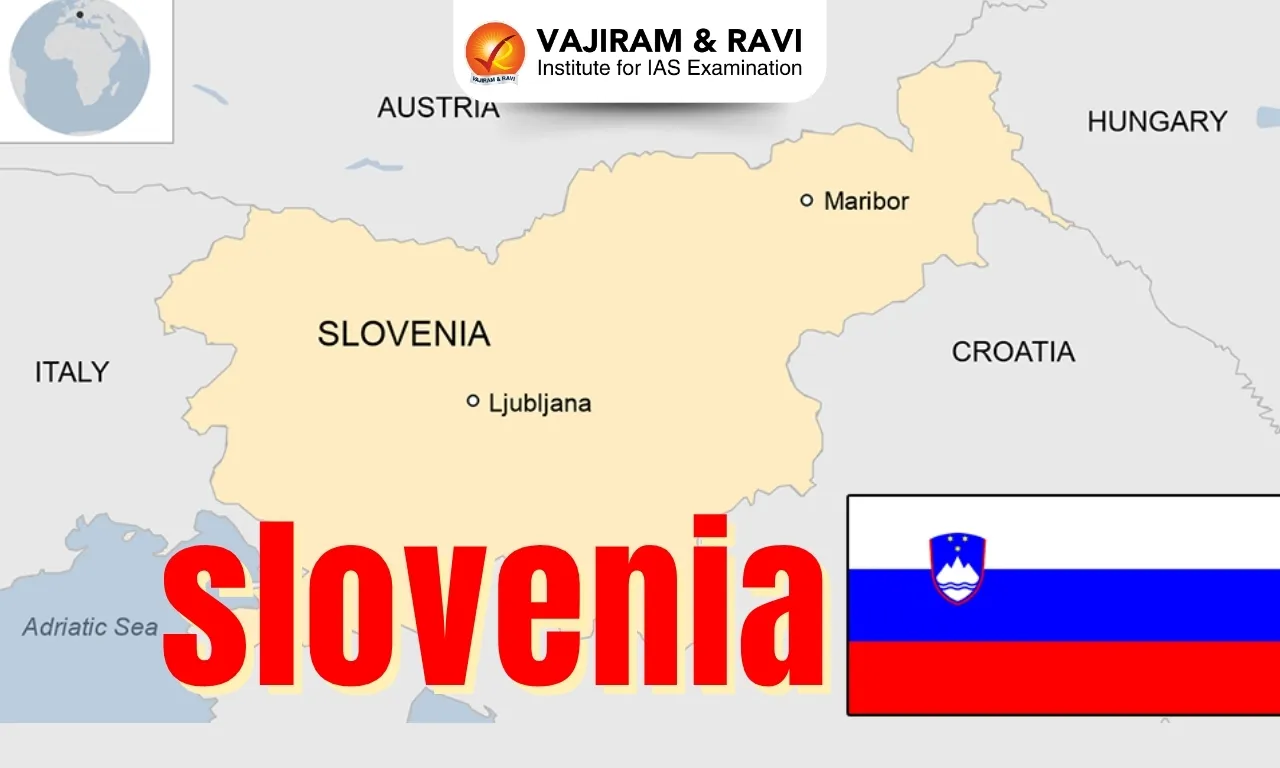Green Hydrogen Certification Scheme of India Latest News
India’s government recently initiated a green hydrogen certification scheme to promote transparency and credibility in production.
About Green Hydrogen Certification Scheme of India
- It was launched by the Ministry of New and Renewable Energy (MNRE), Government of India, under the National Green Hydrogen Mission, aiming to establish India as a global hub for green hydrogen production and export.
- The scheme emphasizes accuracy in emissions data, strict monitoring, and international compatibility, aiming to boost investor confidence and support the growth of a credible green hydrogen market in India.
Features of Green Hydrogen Certification Scheme of India
- Hydrogen can be officially recognized as “green” only if its non-biogenic greenhouse gas emissions do not exceed 2 kg of CO₂ equivalent (CO₂e)/kg of hydrogen, averaged over 12 months, under the GHCI.
- The scheme outlines a comprehensive certification processfor producers to verify that the hydrogen is produced using renewable energy and that the greenhouse gas emissions do not exceed 2 kg of CO₂ equivalent (CO₂e)/kg of hydrogen.
- This threshold is measured across the production stages within a defined system boundary.
- The certification framework includes clear definitions, objectives, roles of stakeholders, eligible production pathways (electrolysis and biomass conversion), and emissions quantification methods.
- Producers must appoint Accredited Carbon Verification (ACV) agencies,recognized by the Bureau of Energy Efficiency,for independent verification.
- The GHCI operates with four types of certificates—Concept Certificate, Facility-Level Certificate, Provisional Certificate, and Final Certificate.
- Concept and Facility-Level certificates focus on design and operational readiness, while Provisional and Final certificates evaluate actual emissions based on production data.
- Final certificates are mandatory for facilities benefiting from government incentives or intending to sell hydrogen domestically.
- Data monitoring plays a crucial role. Producers are required to maintain detailed production and emissions records for at least five years.
- A standardized MRV (Monitoring, Reporting, Verification) framework guides this process, enhancing transparency and enabling traceability.
- The scheme also aligns with international standards like ISO 19870:2023 for lifecycle GHG assessments, helping ensure global comparability and investor confidence.
- The certification also enables producers to access carbon credits under the Carbon Credit Trading Scheme (CCTS), subject to additional compliance requirements.
- Certificates are issued in multiples of 100 kg of hydrogen and include detailed information on emission intensity and production attributes.
- A nominal fee is applicable only for the final certificate.
- To ensure compliance, the MNRE or its designated agency may withdraw certificates if verified emissions exceed the allowed thresholdor if producers fail to complete the certification process on time.
- Repeat non-compliance can lead to penalties, including ineligibility for future certification cycles.
Source: ET
Last updated on July, 2025
→ UPSC Notification 2025 was released on 22nd January 2025.
→ UPSC Prelims Result 2025 is out now for the CSE held on 25 May 2025.
→ UPSC Prelims Question Paper 2025 and Unofficial Prelims Answer Key 2025 are available now.
→ UPSC Calendar 2026 is released on 15th May, 2025.
→ The UPSC Vacancy 2025 were released 1129, out of which 979 were for UPSC CSE and remaining 150 are for UPSC IFoS.
→ UPSC Mains 2025 will be conducted on 22nd August 2025.
→ UPSC Prelims 2026 will be conducted on 24th May, 2026 & UPSC Mains 2026 will be conducted on 21st August 2026.
→ The UPSC Selection Process is of 3 stages-Prelims, Mains and Interview.
→ UPSC Result 2024 is released with latest UPSC Marksheet 2024. Check Now!
→ UPSC Toppers List 2024 is released now. Shakti Dubey is UPSC AIR 1 2024 Topper.
→ Also check Best IAS Coaching in Delhi
Green Hydrogen Certification Scheme of India FAQs
Q1. Which ministry launched the Green Hydrogen Certification Scheme (GHCI) in India?+
Q2. What role does the Final Certificate play in the GHCI framework?+
Q3. What type of agencies must producers appoint for independent emissions verification under GHCI?+
Tags: green hydrogen certification scheme of india Prelims Pointers upsc prelims current affairs














